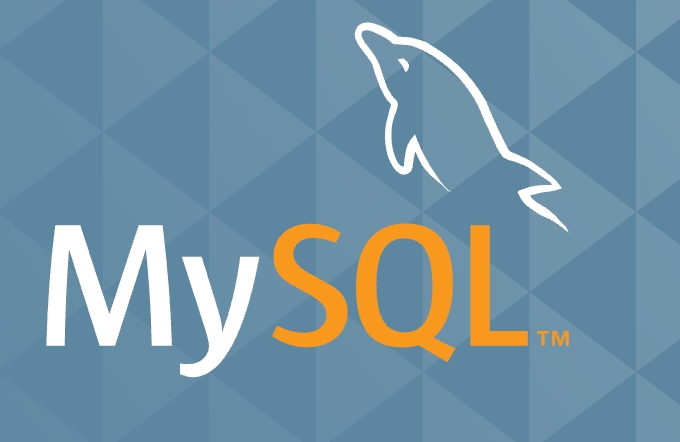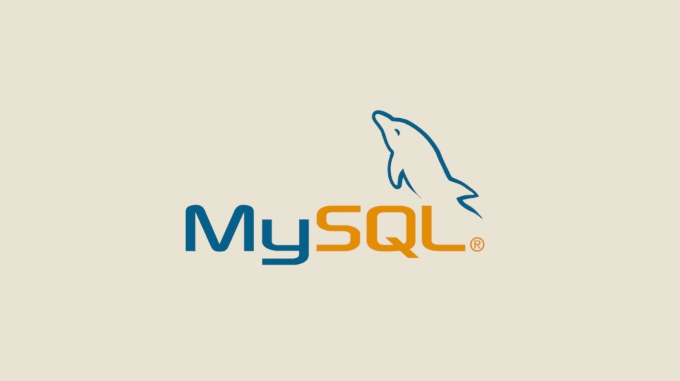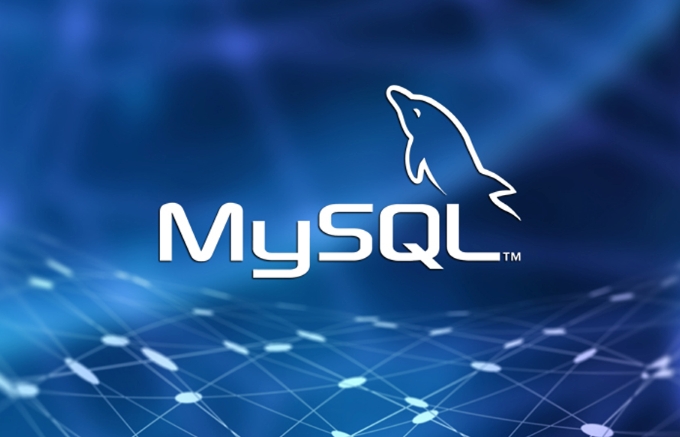The key steps to install MySQL on CentOS 9 include adding an official YUM source, installing a MySQL server, starting and enabling services, performing secure initialization, and configuring a firewall. First, use dnf install https://dev.mysql.com/get/mysql80-community-release-el9-7.noarch.rpm to add the official source; second, run dnf install mysql-server to install MySQL; then, use systemctl start mysqld and systemctl enable mysqld to start the service and set up the power-on self-start; then, use grep 'temporary password' /var/log/mysqld.log to obtain the temporary password, and run mysql_secure_installation to set strong passwords and security options; finally, if you need remote access, use firewall-cmd --permanent --add-port=3306/tcp Open the port and reload the firewall while creating a dedicated user that allows remote connections.

Installing MySQL is not actually complicated on CentOS 9, but there are several key points that need to be paid attention to, especially the configuration of the system environment and software source. If you are a novice or are new to Linux systems, follow the steps and you can complete it smoothly.

Add MySQL official software source
There is no latest version of MySQL in the default repository in CentOS 9, so the first step is to add the official YUM source.
You can download the corresponding version of the repo package on MySQL official website. For example, the RPM file that starts with mysql80-community-release is commonly used.

Use the following command to download and install:
dnf install https://dev.mysql.com/get/mysql80-community-release-el9-7.noarch.rpm
After this step is completed, the system will recognize the source address of MySQL, and then you can use dnf to install it.

Install MySQL Server
After adding the source, you can start installing:
dnf install mysql-server
This command will automatically install MySQL server programs, client tools and some dependency packages. The entire process may take several minutes, depending on your network situation.
After the installation is completed, it is recommended to start the MySQL service first and set up the power-on self-start:
systemctl start mysqld systemctl enable mysqld
You can use the following command to confirm whether the status is running normally:
systemctl status mysqld
If you see active (running), it means that the startup has been successfully launched.
Initial security settings
After the MySQL installation is completed, a temporary password will be generated by default, which can be viewed through the log:
grep 'temporary password' /var/log/mysqld.log
Then run the secure initialization script:
mysql_secure_installation
This script will let you make several simple settings, including modifying the root password, deleting anonymous users, prohibiting remote root login, etc. It is recommended to choose "Y" all the way and add all basic safety measures.
Pay special attention here: the new password must comply with the default policy (case numeric symbols), otherwise it will be rejected.
Configure a firewall (if remote access is required)
If you plan to connect MySQL from another machine, you also need to open port 3306:
firewall-cmd --permanent --add-port=3306/tcp firewall-cmd --reload
Also, remember to create a user in MySQL that allows remote connections instead of logging in remotely directly with the root account.
Basically that's it. After the entire process is completed, you have successfully deployed a basic MySQL database on CentOS 9. It is not complicated, but some details are easy to ignore, such as firewall, initial password, and root remote access points, all of which must be checked one by one.
The above is the detailed content of How to install MySQL on CentOS 9. For more information, please follow other related articles on the PHP Chinese website!

Hot AI Tools

Undress AI Tool
Undress images for free

Undresser.AI Undress
AI-powered app for creating realistic nude photos

AI Clothes Remover
Online AI tool for removing clothes from photos.

Clothoff.io
AI clothes remover

Video Face Swap
Swap faces in any video effortlessly with our completely free AI face swap tool!

Hot Article

Hot Tools

Notepad++7.3.1
Easy-to-use and free code editor

SublimeText3 Chinese version
Chinese version, very easy to use

Zend Studio 13.0.1
Powerful PHP integrated development environment

Dreamweaver CS6
Visual web development tools

SublimeText3 Mac version
God-level code editing software (SublimeText3)

Hot Topics
 What is GTID (Global Transaction Identifier) and what are its advantages?
Jun 19, 2025 am 01:03 AM
What is GTID (Global Transaction Identifier) and what are its advantages?
Jun 19, 2025 am 01:03 AM
GTID (Global Transaction Identifier) ??solves the complexity of replication and failover in MySQL databases by assigning a unique identity to each transaction. 1. It simplifies replication management, automatically handles log files and locations, allowing slave servers to request transactions based on the last executed GTID. 2. Ensure consistency across servers, ensure that each transaction is applied only once on each server, and avoid data inconsistency. 3. Improve troubleshooting efficiency. GTID includes server UUID and serial number, which is convenient for tracking transaction flow and accurately locate problems. These three core advantages make MySQL replication more robust and easy to manage, significantly improving system reliability and data integrity.
 What is a typical process for MySQL master failover?
Jun 19, 2025 am 01:06 AM
What is a typical process for MySQL master failover?
Jun 19, 2025 am 01:06 AM
MySQL main library failover mainly includes four steps. 1. Fault detection: Regularly check the main library process, connection status and simple query to determine whether it is downtime, set up a retry mechanism to avoid misjudgment, and can use tools such as MHA, Orchestrator or Keepalived to assist in detection; 2. Select the new main library: select the most suitable slave library to replace it according to the data synchronization progress (Seconds_Behind_Master), binlog data integrity, network delay and load conditions, and perform data compensation or manual intervention if necessary; 3. Switch topology: Point other slave libraries to the new master library, execute RESETMASTER or enable GTID, update the VIP, DNS or proxy configuration to
 How to connect to a MySQL database using the command line?
Jun 19, 2025 am 01:05 AM
How to connect to a MySQL database using the command line?
Jun 19, 2025 am 01:05 AM
The steps to connect to the MySQL database are as follows: 1. Use the basic command format mysql-u username-p-h host address to connect, enter the username and password to log in; 2. If you need to directly enter the specified database, you can add the database name after the command, such as mysql-uroot-pmyproject; 3. If the port is not the default 3306, you need to add the -P parameter to specify the port number, such as mysql-uroot-p-h192.168.1.100-P3307; In addition, if you encounter a password error, you can re-enter it. If the connection fails, check the network, firewall or permission settings. If the client is missing, you can install mysql-client on Linux through the package manager. Master these commands
 Why do indexes improve MySQL query speed?
Jun 19, 2025 am 01:05 AM
Why do indexes improve MySQL query speed?
Jun 19, 2025 am 01:05 AM
IndexesinMySQLimprovequeryspeedbyenablingfasterdataretrieval.1.Theyreducedatascanned,allowingMySQLtoquicklylocaterelevantrowsinWHEREorORDERBYclauses,especiallyimportantforlargeorfrequentlyqueriedtables.2.Theyspeedupjoinsandsorting,makingJOINoperation
 Why is InnoDB the recommended storage engine now?
Jun 17, 2025 am 09:18 AM
Why is InnoDB the recommended storage engine now?
Jun 17, 2025 am 09:18 AM
InnoDB is MySQL's default storage engine because it outperforms other engines such as MyISAM in terms of reliability, concurrency performance and crash recovery. 1. It supports transaction processing, follows ACID principles, ensures data integrity, and is suitable for key data scenarios such as financial records or user accounts; 2. It adopts row-level locks instead of table-level locks to improve performance and throughput in high concurrent write environments; 3. It has a crash recovery mechanism and automatic repair function, and supports foreign key constraints to ensure data consistency and reference integrity, and prevent isolated records and data inconsistencies.
 What are the transaction isolation levels in MySQL, and which is the default?
Jun 23, 2025 pm 03:05 PM
What are the transaction isolation levels in MySQL, and which is the default?
Jun 23, 2025 pm 03:05 PM
MySQL's default transaction isolation level is RepeatableRead, which prevents dirty reads and non-repeatable reads through MVCC and gap locks, and avoids phantom reading in most cases; other major levels include read uncommitted (ReadUncommitted), allowing dirty reads but the fastest performance, 1. Read Committed (ReadCommitted) ensures that the submitted data is read but may encounter non-repeatable reads and phantom readings, 2. RepeatableRead default level ensures that multiple reads within the transaction are consistent, 3. Serialization (Serializable) the highest level, prevents other transactions from modifying data through locks, ensuring data integrity but sacrificing performance;
 What are the ACID properties of a MySQL transaction?
Jun 20, 2025 am 01:06 AM
What are the ACID properties of a MySQL transaction?
Jun 20, 2025 am 01:06 AM
MySQL transactions follow ACID characteristics to ensure the reliability and consistency of database transactions. First, atomicity ensures that transactions are executed as an indivisible whole, either all succeed or all fail to roll back. For example, withdrawals and deposits must be completed or not occur at the same time in the transfer operation; second, consistency ensures that transactions transition the database from one valid state to another, and maintains the correct data logic through mechanisms such as constraints and triggers; third, isolation controls the visibility of multiple transactions when concurrent execution, prevents dirty reading, non-repeatable reading and fantasy reading. MySQL supports ReadUncommitted and ReadCommi.
 How to add the MySQL bin directory to the system PATH
Jul 01, 2025 am 01:39 AM
How to add the MySQL bin directory to the system PATH
Jul 01, 2025 am 01:39 AM
To add MySQL's bin directory to the system PATH, it needs to be configured according to the different operating systems. 1. Windows system: Find the bin folder in the MySQL installation directory (the default path is usually C:\ProgramFiles\MySQL\MySQLServerX.X\bin), right-click "This Computer" → "Properties" → "Advanced System Settings" → "Environment Variables", select Path in "System Variables" and edit it, add the MySQLbin path, save it and restart the command prompt and enter mysql--version verification; 2.macOS and Linux systems: Bash users edit ~/.bashrc or ~/.bash_






